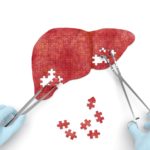Heartburn medicine-The heartburn is nothing more than the irritation in the stomach, which is generated by the gastric juice of the stomach. And achieves pain in the lower chest and extends to the throat. This is mainly due to foods that have excess fat, spicy foods, and excesses of alcohol, among many other foods. Click here to find a nutritionist.
There are medications that help you control the heartburn medicine. But if you want to opt for natural remedies, here is a list that will be of great help.
Natural remedies to combat heartburn medicine

Chamomile
An infusion of chamomile will alleviate any sign of reflux or upset stomach, caused by food. So opt for a cup of infusion after each meal. To do this, put a cup of water on medium heat. And when it is boiled add a little chamomile, turn off and let it rest for a few minutes. Strain and serve.
Banana
The banana is a very complete food, rich in vitamins. So it should be included in any diet. In addition, it has a large amount of potassium in its composition. And being an alkaline element with a very high pH, is able to minimize the acidity of the stomach almost immediately. Keep in mind that it is better to eat it when it is mature and in a moderate way, otherwise it may be counterproductive.
Cantaloupe
Fruits are natural and healthy foods. In this case. The melon is a refreshing fruit with significant properties and qualities. The intake of melon will help regenerate the internal damage, which is caused by the excess of stomach acid.
Ginger
Among the most effective natural remedies to combat heartburn medicine is ginger tea. As it helps maintain the pH balance in the stomach. To do this, you should only boil a portion of ginger with a cup of water for 10 minutes. After a while, strain and let cool a little. Drink at night.
Fennel
Fennel is a plant with great health benefits. Eating raw fennel will make the stomach ready to face any digestion, no matter how heavy it is. So chopping the plant and ingesting it in a salad will bring a great flavor to the dish while fighting the symptoms of reflex and acidity.
What is Pacifier?
The pacifier, also called chop or tote by the little ones, is an object with a rubber part or similar nipple shaped material that is given to the children to suck. They are usually given to children to calm them, especially when they are starting to get their first teeth. They can be formed by two joined pieces, the rubber to suck, the disc, which is what covers the lips of the baby. And serves as a stop, and the handle to make it easier to catch it.
The pacifier serves to calm the baby, and if they do not use a pacifier, they usually use their thumb to have something to suck. This is because the baby is born with the suction reflex to eat. But still uses this gesture to feel calm. From 24-36 months, the baby no longer uses that reflex. So we can start to remove the pacifier, which will be easier than detaching the habit of sucking your finger.
The pacifier is a great ally of parents and an adventurous companion for babies and children. Now, when the time comes, can we help the little one in some way to get rid of the pacifier?
Next, we want to present some good ideas to accompany your child in the process of leaving, once and for all. His pacifier. Are you interested? Continue reading and put our advice into practice!
How to remove the pacifier from the child without traumas
Leaving the pacifier is an important moment for the child. But how to get the pacifier off the child without suffering too much? We give you the golden rules.
The child is older and you think that the time has come for your child to separate from the pacifier. But how to convince him to take it away from him? Separating yourself from the pacifier is not easy for the little one. We offer you the golden rules to get rid of your child’s pacifier without suffering any trauma.
- Choose the right moment, a time when you have time and patience to support your child in this difficult task for him.
- Find out if your child is ready to take this step. The indicated age to leave the pacifier is between 12 and 24 months. When the child begins to separate from the mother and find satisfaction in other activities, such as play.
- Once you have decided to take your child’s pacifier, let him know, preparing him in time for the event. A good idea to take it off is to tell a story. In which, one day, as if by magic, the pacifier disappears.
- Listen to their reactions: you must allow them to express their feelings, their fear of not getting it. Knowing that you have your understanding is very important to him.
- Prepare to endure your crisis and not give in: there will come times when the child will cry and ask for a pacifier desperately. He will ask for it insistently. But you will have to be strong because once you have taken the step, you will not have to go back.
- Offer a substitute pacifier: The child should be gratified with something else, to show him that he has been older and deserves older things.
- It may be the case that feeling greater is more important to him than renouncing an object so dear to him until then.
- Do not get angry with him and do not yell at him comparing him with other children who have already left the pacifier. Each child has their rhythm.
- If at night you are used to falling asleep with a pacifier, introduce a new ritual that is pleasant: a lullaby, a story, or something that helps you to separate serenely from the world, when falling asleep.



